Every time, after hours and hours of exploring, noting, discovering and admiring the stands at the Salone del Mobile, you go home with a strange feeling of saturation. You have seen a lot. You have fulfilled your mind. You know you have not seen everything, but now you have to put things in order. You have to work out what has impressed you most. What surprised you. What seems most exciting or functional to you. And so, after a day of total immersion (and after 27,720 steps) among the new exhibits at the Salone del Mobile 2022, here is my top ten.
In order of discovery, not preference.
Milan Design Week
Salone del Mobile and Fuorisalone 2025
Ten design pieces from the Salone del Mobile 2022
From Artemide to Edra, from Fioravanti to Anastassiades, Silvana Annichiarico sums up the best of this year’s fair in a selection of ten pieces.
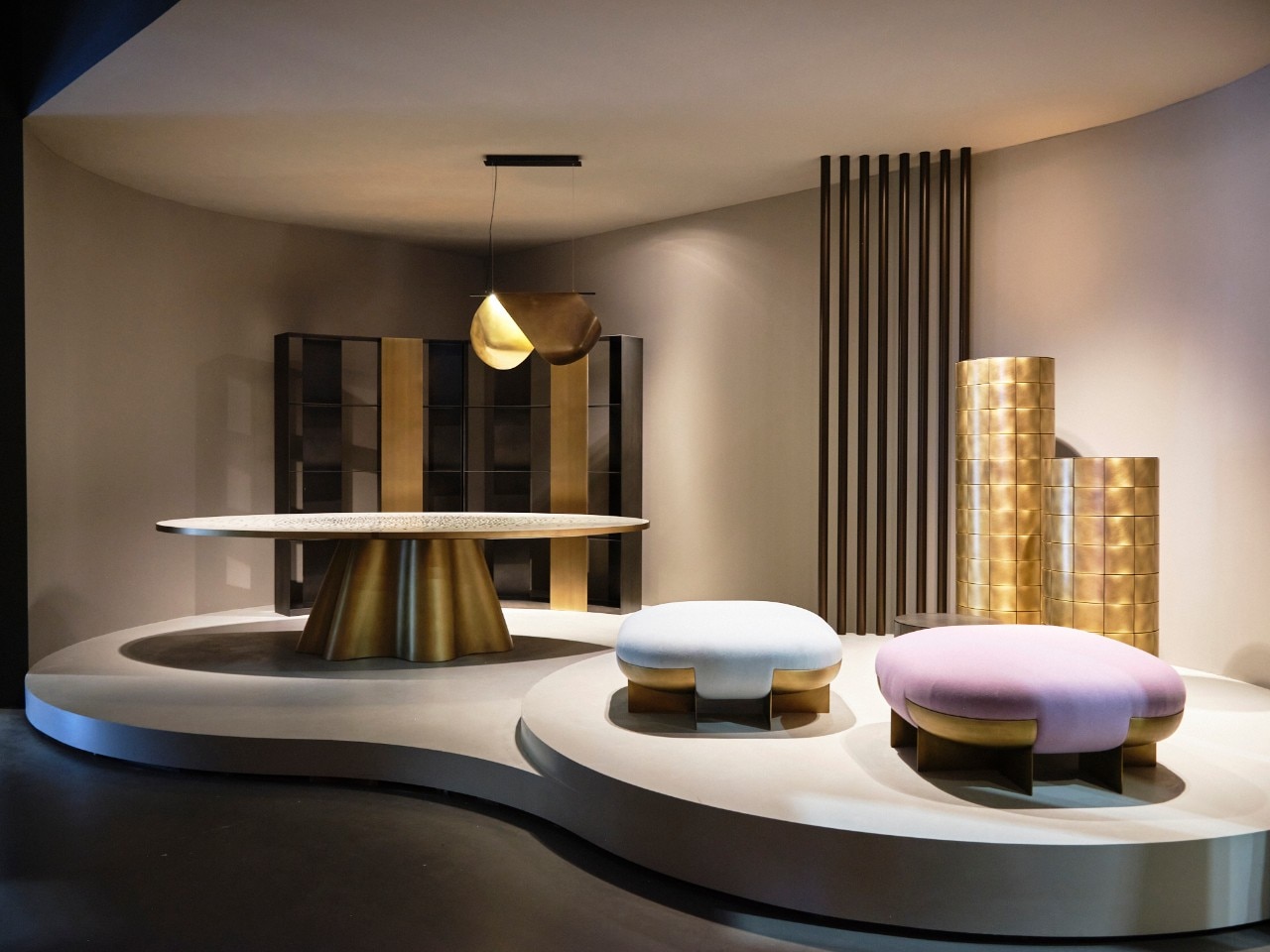
 View gallery
View gallery
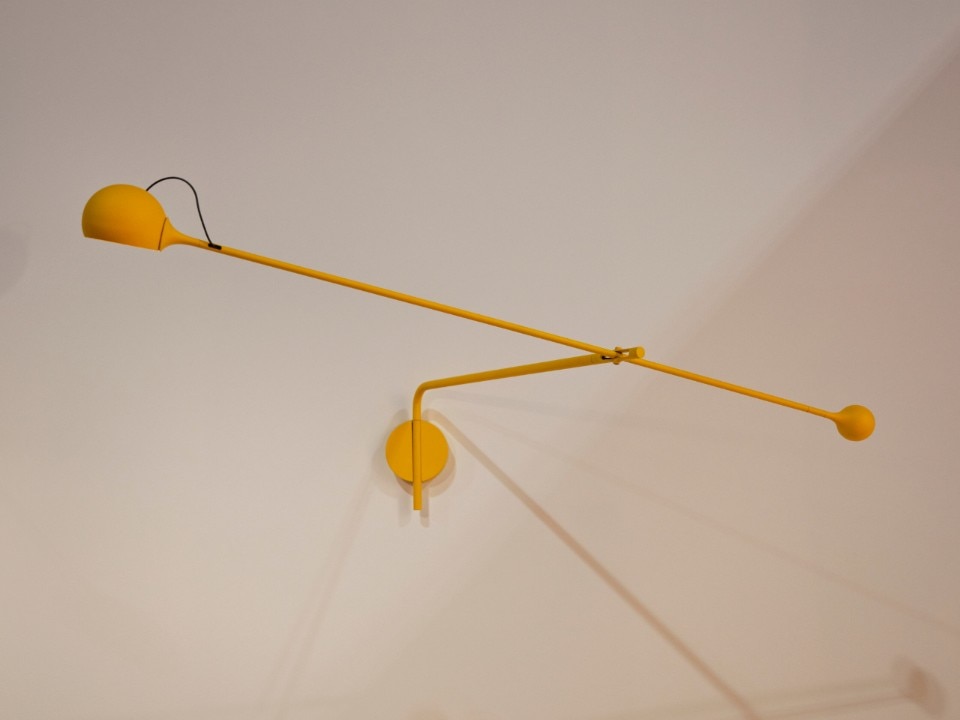
1. Ixa, Foster+Partners for Artemide
Pavilion 15, stand C19 D22
Light where you want it. Where you need it. How you like it. With the intensity you prefer. This new flexible and functional system of lamps frees the luminaire from its usual static nature by means of a 360-degree rotating spherical head, guaranteeing highly customised lighting that interacts with the user’s needs.
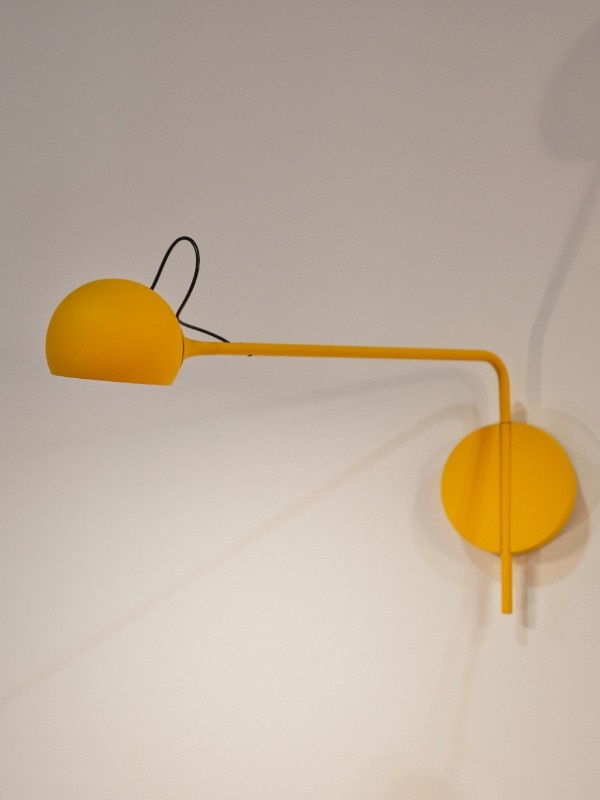
Foto Marco Menghi
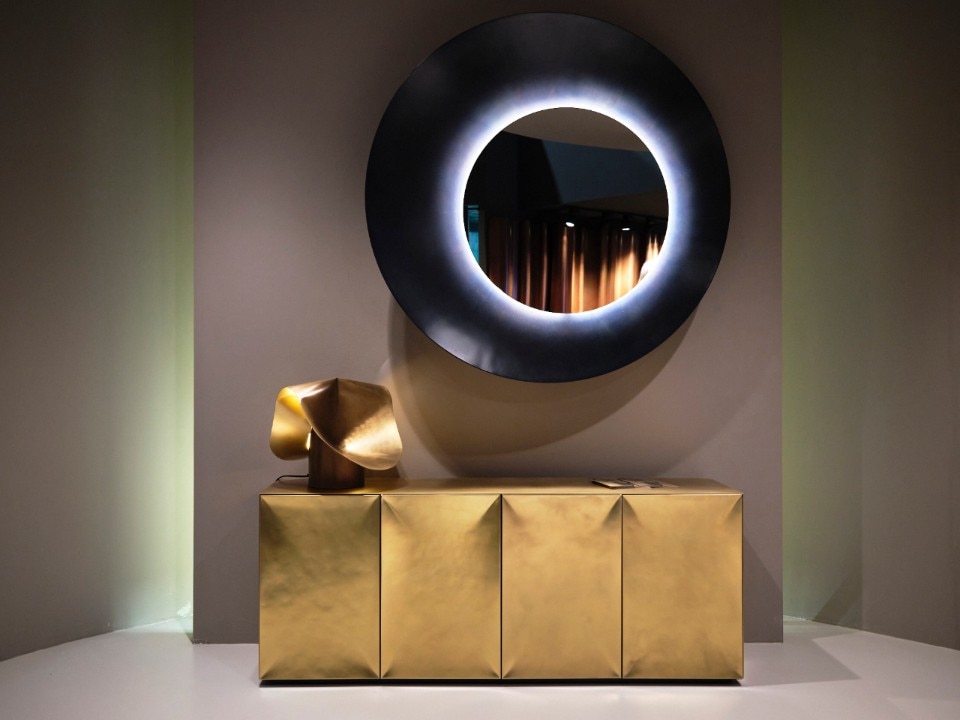
2. Biomorphic, The value of research for De Castelli
Pavilion 15, stand C24 D26
Not an object but a project: a long research work on hammering and convex techniques of the late 19th century. De Castelli develops and supports it believing that exhuming and reinterpreting ancient, now forgotten techniques, but explored with contemporary knowledge and technologies is the only way to investigate and anticipate the possible future of metals in design and interiors, producing surprising results. For example, that of bringing metal to express organic and natural forms. Biomorphic, in fact.
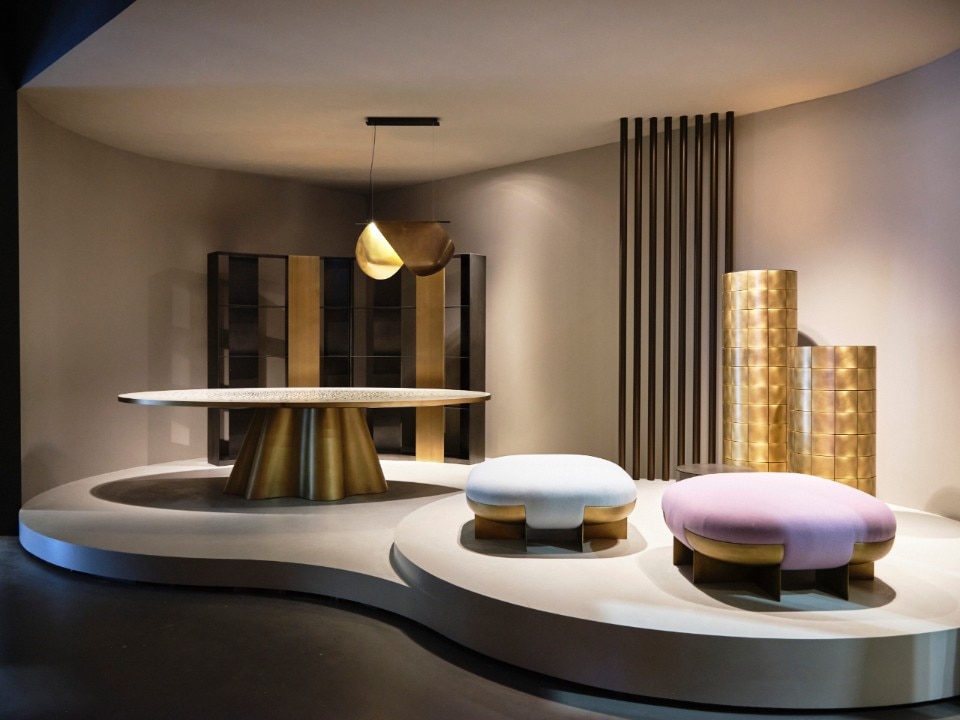
Foto Marco Menghi
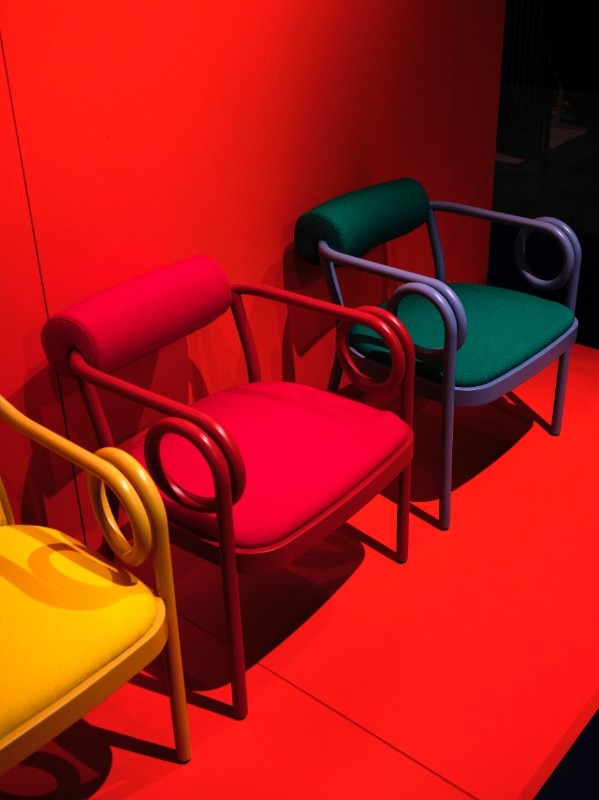
3. Loop, India Mahdavi for Gebrüder Thonet Vienna
Pavilion 20, stand D02
The historic manufacturer of one of the most iconic chairs in history inaugurates a collaboration with the French-Iranian designer India Mahdavi, known for her constant use of colour and bold colour palettes. Here, Thonet’s classic predilection for the curved, sinuous line gives rise to an armchair with armrests and a two-seater sofa in which curved beech wood seamlessly draws a line that loops, rolls and spirals. A perfect balance of elegance and playfulness that conveys a feeling of light-heartedness.

Foto Marco Menghi
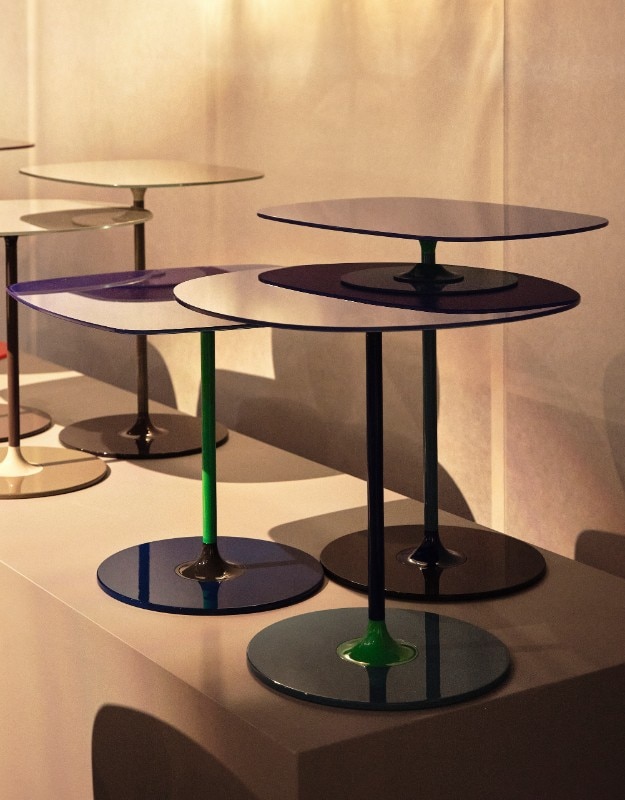
Thierry Side, Piero Lissoni for Kartell
Pavilion 20, stand A09 B10
Colour again. Or rather: colours. In the same side table, Piero Lissoni combines 3 or 4 colours and assembles them in different ways. He treats them as jewels, as if they emanated the brilliance of some precious gems. Glass top and metal leg, the side tables – produced in different heights – combine contrasting colours while maintaining the same colour family. Here then are the sea blue and forest green combinations. Or orange and burgundy. Or black and London smoke grey. An invention that lights up the space and gives character and personality to any living room.
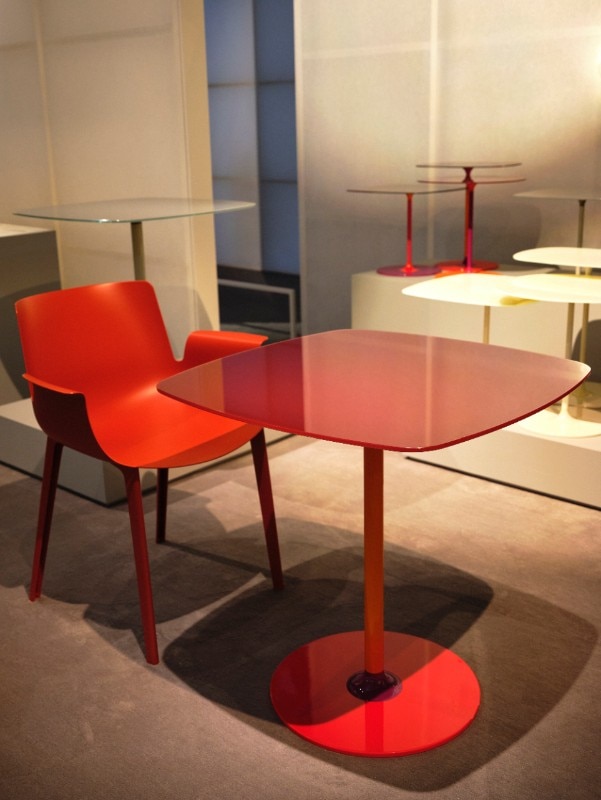
Foto Marco Menghi
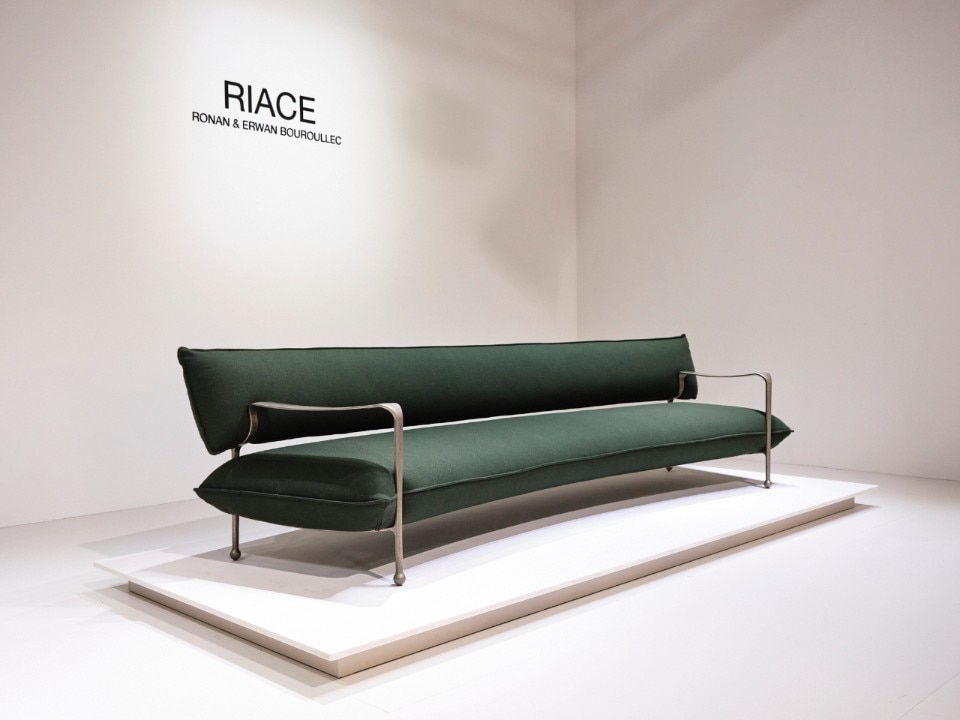
5. Riace, Ronan & Erwan Bouroullec for Magis
Pavilion 10, stand C11 D08
A slender white bronze structure supports – as if suspended – the wide seat and padded backrest. After so many designs and so many models, at the end of a very long research work, the result is sculptural and light at the same time: a sensation of grandeur and dynamism. Just like the bronzes that resurfaced from the sea in the place that gives the sofa its name.
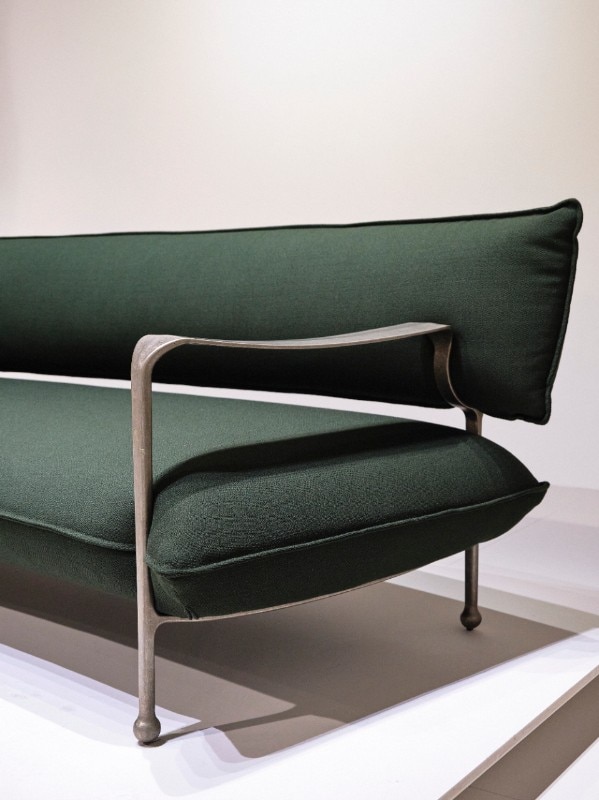
Foto Marco Menghi
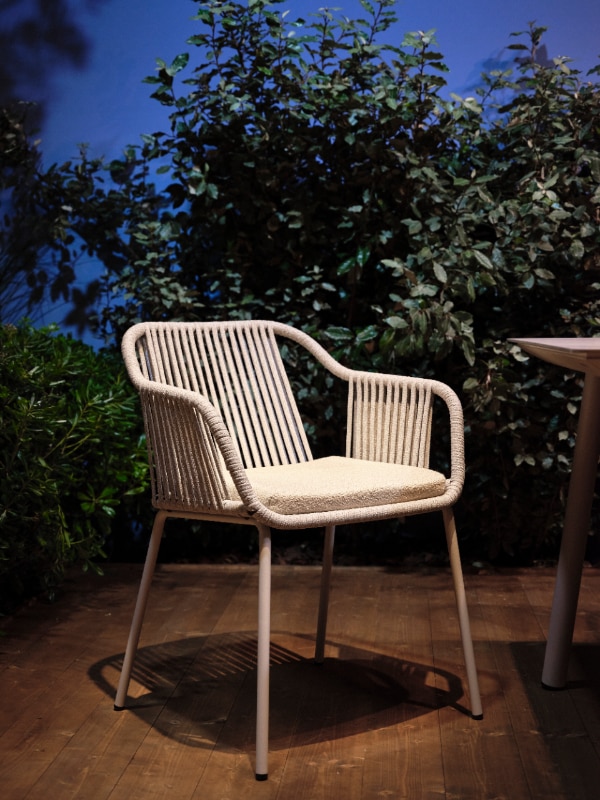
6. Babila Twist, Odo Fioravanti for Pedrali
Pavilion 06, stand A23 B24
The simplicity that is difficult to achieve. Comfort that does not flaunt itself but makes itself available. A tubular steel frame covered with a woven propylene rope made by Italian craftsmen. Two different materials – rope and metal – that cooperate to generate a spacious and welcoming, sober, very modern and at the same time old fashioned seat. The draining polyurethane foam cushion makes it perfect for outdoor use.
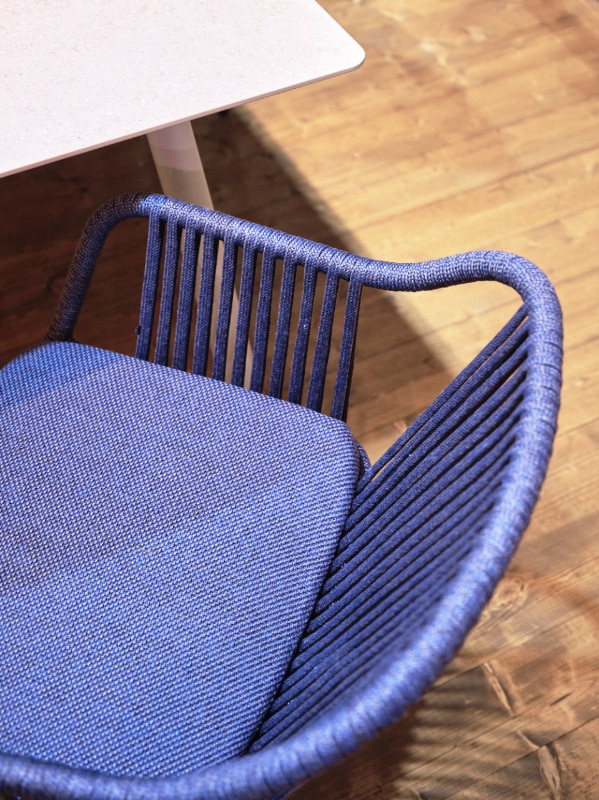
Foto Marco Menghi
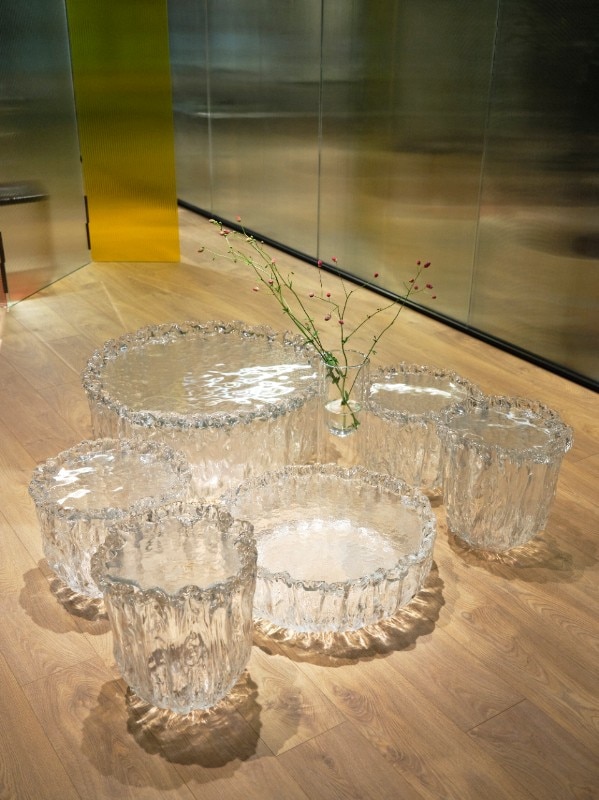
7. Fountain, Tokujin Yoshioka for Glas Italia
Pavilion 22, stand H18
A prime example of series diversification and the union of high craftsmanship (in this case that of the Murano glass masters) and industrial technology. Starting from a handcrafted glass disc, a series of low round tables of great preciousness is generated. Murano crystal is cast, modelled and chiselled according to skilful working techniques that make each table different from the other. The intention is to evoke the water flowing from a spring with glass, with all its irregularities and ripples. The artificial never fails to evoke the unmatched pattern of nature
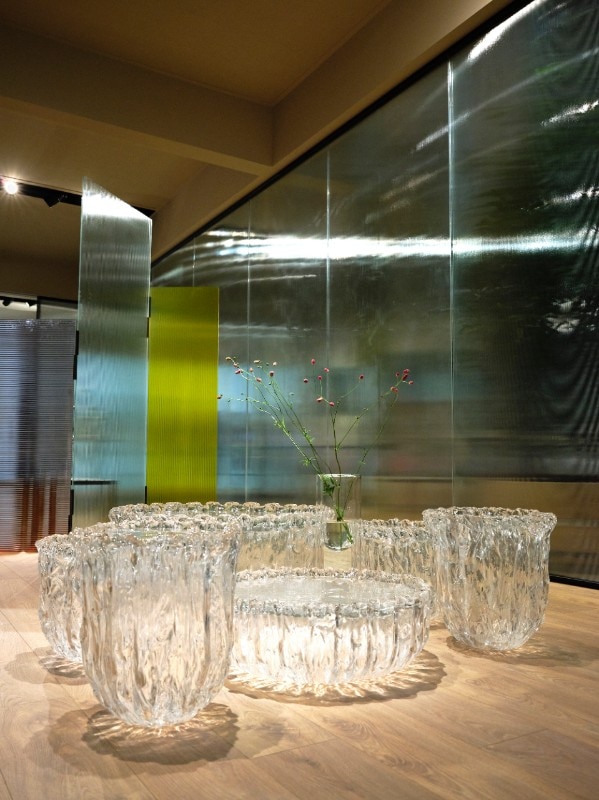
Foto Marco Menghi
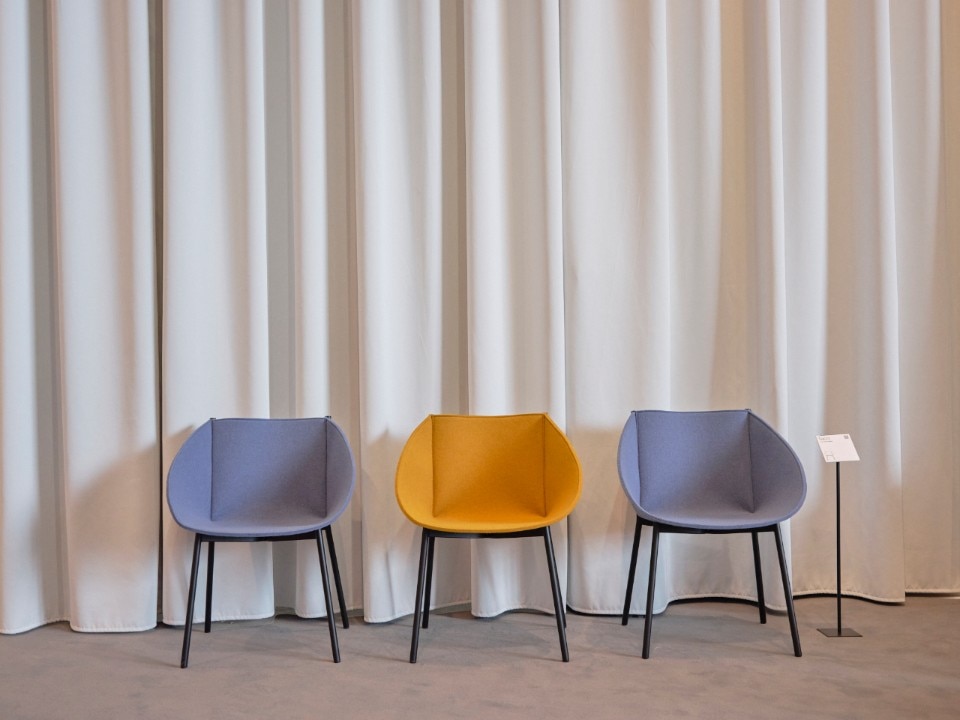
8. Taco, Alessandro Stabile for LaCividina
Pavilion 16, stand A23 B18
Miracles of a “poor” material such as felt: Taco is a padded armchair that – with its two layers of felt – revolutionises the production and constituent system of traditional padding. No more wooden frame. No more polyurethane foam. A simple gesture of courageous innovation. As Gaetano Pesce had guessed with his Feltri, sometimes it really is the material that makes the difference.
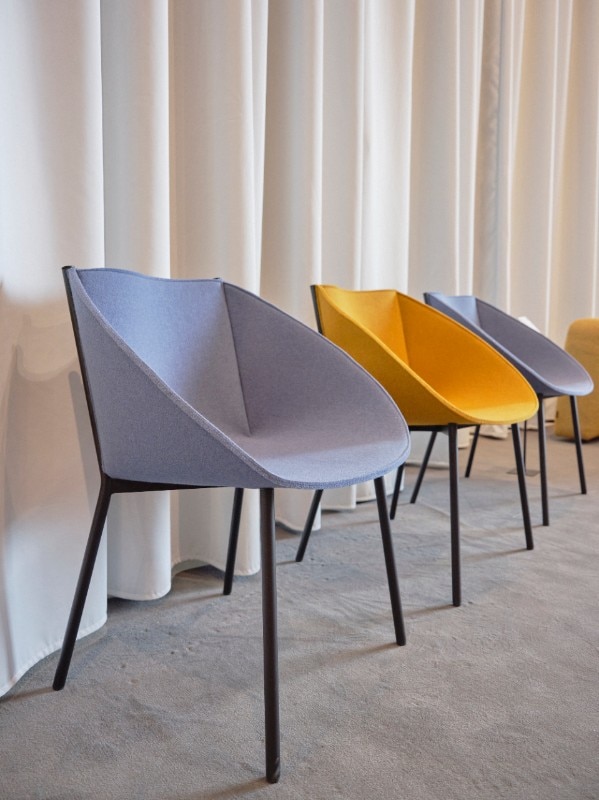
Foto Marco Menghi
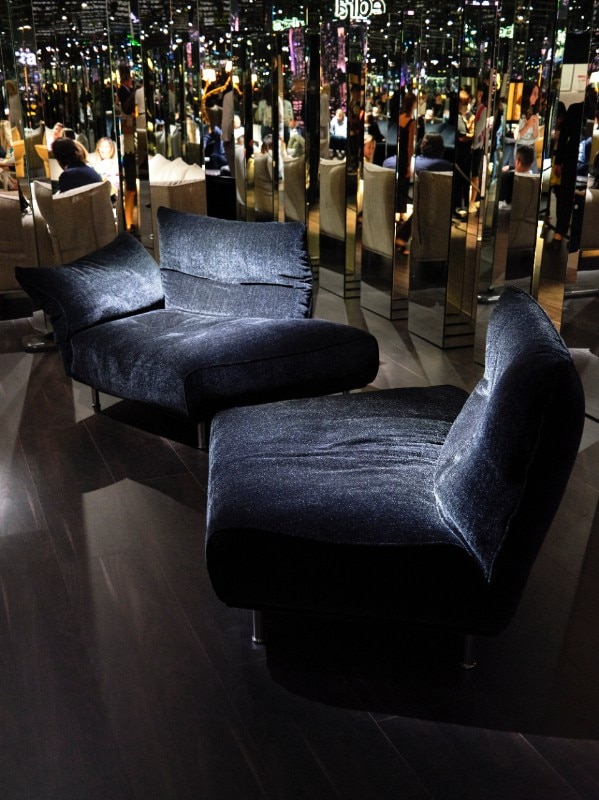
9. Standalto. Francesco Binfaré for Edra
Pavilion 20, stand C01 C03 F04
Before him, sofas were almost micro-architectures. They used to have a rigid structure and an established form: here the backrest, there the seat. Francesco Binfaré has deconstructed sofas. He has freed them from the typological, technological and constructive constraints they had been carrying around for centuries. His new creation maintains the idea of the intelligent cushion (backrest and armrests can be shaped at will while comfortably seated) but re-proposes it in a model floating above the floor, but nevertheless completely adaptable to the user’s desires. Not only elegant. Also soft, supple, customisable.
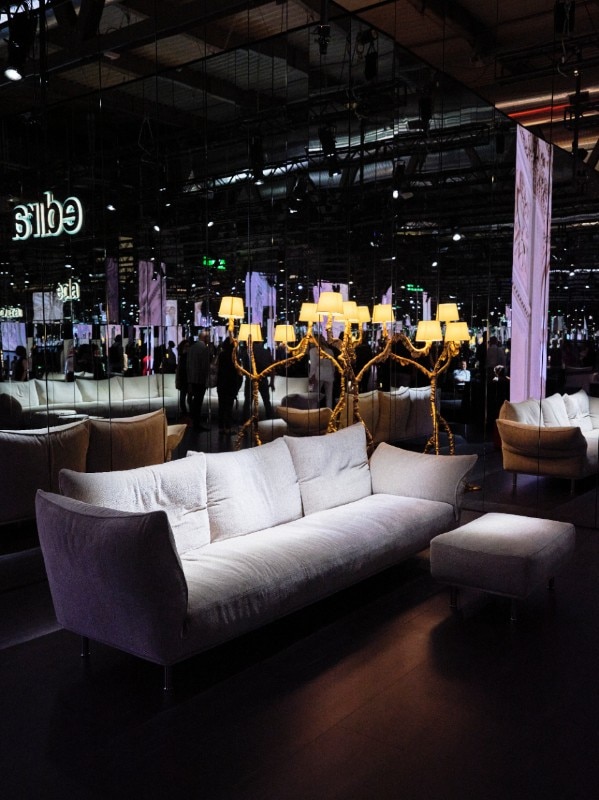
Foto Marco Menghi

10. Superfan, Michael Anastassiades for Kettal
Pavilion 20, stand B05 B07 C06 C10
Michael Anastassiades likes hard undertakings. Like that of revisiting an apparently unchangeable product as the fan. The Greek-Cypriot designer does it with a simplicity and essentiality that are truly exemplary, making an object that is generally only functional aesthetically pleasing. After all, the fan is one of the objects that should be rediscovered. Not only for energy-saving reasons, but also because the need to move air is increasingly felt everywhere.
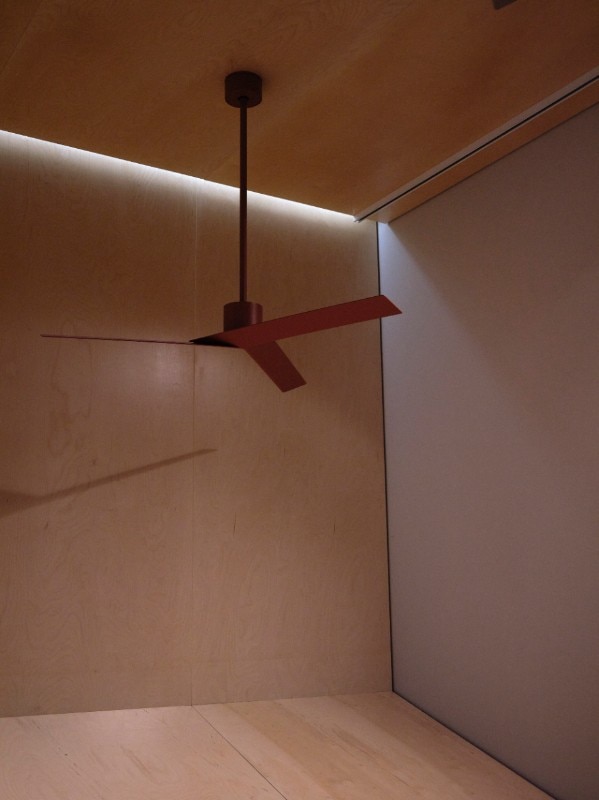
Foto Marco Menghi

1. Ixa, Foster+Partners for Artemide
Light where you want it. Where you need it. How you like it. With the intensity you prefer. This new flexible and functional system of lamps frees the luminaire from its usual static nature by means of a 360-degree rotating spherical head, guaranteeing highly customised lighting that interacts with the user’s needs.
Pavilion 15, stand C19 D22

Foto Marco Menghi

2. Biomorphic, The value of research for De Castelli
Not an object but a project: a long research work on hammering and convex techniques of the late 19th century. De Castelli develops and supports it believing that exhuming and reinterpreting ancient, now forgotten techniques, but explored with contemporary knowledge and technologies is the only way to investigate and anticipate the possible future of metals in design and interiors, producing surprising results. For example, that of bringing metal to express organic and natural forms. Biomorphic, in fact.
Pavilion 15, stand C24 D26

Foto Marco Menghi

3. Loop, India Mahdavi for Gebrüder Thonet Vienna
The historic manufacturer of one of the most iconic chairs in history inaugurates a collaboration with the French-Iranian designer India Mahdavi, known for her constant use of colour and bold colour palettes. Here, Thonet’s classic predilection for the curved, sinuous line gives rise to an armchair with armrests and a two-seater sofa in which curved beech wood seamlessly draws a line that loops, rolls and spirals. A perfect balance of elegance and playfulness that conveys a feeling of light-heartedness.
Pavilion 20, stand D02

Foto Marco Menghi

Thierry Side, Piero Lissoni for Kartell
Colour again. Or rather: colours. In the same side table, Piero Lissoni combines 3 or 4 colours and assembles them in different ways. He treats them as jewels, as if they emanated the brilliance of some precious gems. Glass top and metal leg, the side tables – produced in different heights – combine contrasting colours while maintaining the same colour family. Here then are the sea blue and forest green combinations. Or orange and burgundy. Or black and London smoke grey. An invention that lights up the space and gives character and personality to any living room.
Pavilion 20, stand A09 B10

Foto Marco Menghi

5. Riace, Ronan & Erwan Bouroullec for Magis
A slender white bronze structure supports – as if suspended – the wide seat and padded backrest. After so many designs and so many models, at the end of a very long research work, the result is sculptural and light at the same time: a sensation of grandeur and dynamism. Just like the bronzes that resurfaced from the sea in the place that gives the sofa its name.
Pavilion 10, stand C11 D08

Foto Marco Menghi

6. Babila Twist, Odo Fioravanti for Pedrali
The simplicity that is difficult to achieve. Comfort that does not flaunt itself but makes itself available. A tubular steel frame covered with a woven propylene rope made by Italian craftsmen. Two different materials – rope and metal – that cooperate to generate a spacious and welcoming, sober, very modern and at the same time old fashioned seat. The draining polyurethane foam cushion makes it perfect for outdoor use.
Pavilion 06, stand A23 B24

Foto Marco Menghi

7. Fountain, Tokujin Yoshioka for Glas Italia
A prime example of series diversification and the union of high craftsmanship (in this case that of the Murano glass masters) and industrial technology. Starting from a handcrafted glass disc, a series of low round tables of great preciousness is generated. Murano crystal is cast, modelled and chiselled according to skilful working techniques that make each table different from the other. The intention is to evoke the water flowing from a spring with glass, with all its irregularities and ripples. The artificial never fails to evoke the unmatched pattern of nature
Pavilion 22, stand H18

Foto Marco Menghi

8. Taco, Alessandro Stabile for LaCividina
Miracles of a “poor” material such as felt: Taco is a padded armchair that – with its two layers of felt – revolutionises the production and constituent system of traditional padding. No more wooden frame. No more polyurethane foam. A simple gesture of courageous innovation. As Gaetano Pesce had guessed with his Feltri, sometimes it really is the material that makes the difference.
Pavilion 16, stand A23 B18

Foto Marco Menghi

9. Standalto. Francesco Binfaré for Edra
Before him, sofas were almost micro-architectures. They used to have a rigid structure and an established form: here the backrest, there the seat. Francesco Binfaré has deconstructed sofas. He has freed them from the typological, technological and constructive constraints they had been carrying around for centuries. His new creation maintains the idea of the intelligent cushion (backrest and armrests can be shaped at will while comfortably seated) but re-proposes it in a model floating above the floor, but nevertheless completely adaptable to the user’s desires. Not only elegant. Also soft, supple, customisable.
Pavilion 20, stand C01 C03 F04

Foto Marco Menghi

10. Superfan, Michael Anastassiades for Kettal
Michael Anastassiades likes hard undertakings. Like that of revisiting an apparently unchangeable product as the fan. The Greek-Cypriot designer does it with a simplicity and essentiality that are truly exemplary, making an object that is generally only functional aesthetically pleasing. After all, the fan is one of the objects that should be rediscovered. Not only for energy-saving reasons, but also because the need to move air is increasingly felt everywhere.
Pavilion 20, stand B05 B07 C06 C10

Foto Marco Menghi
-
Sections

